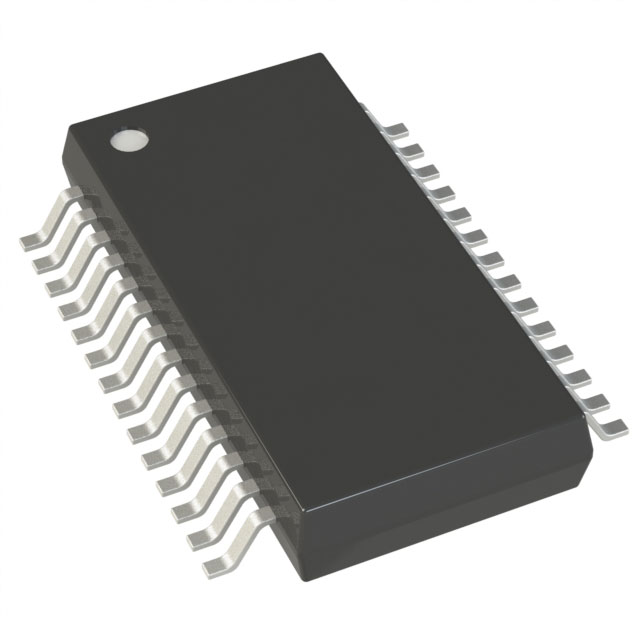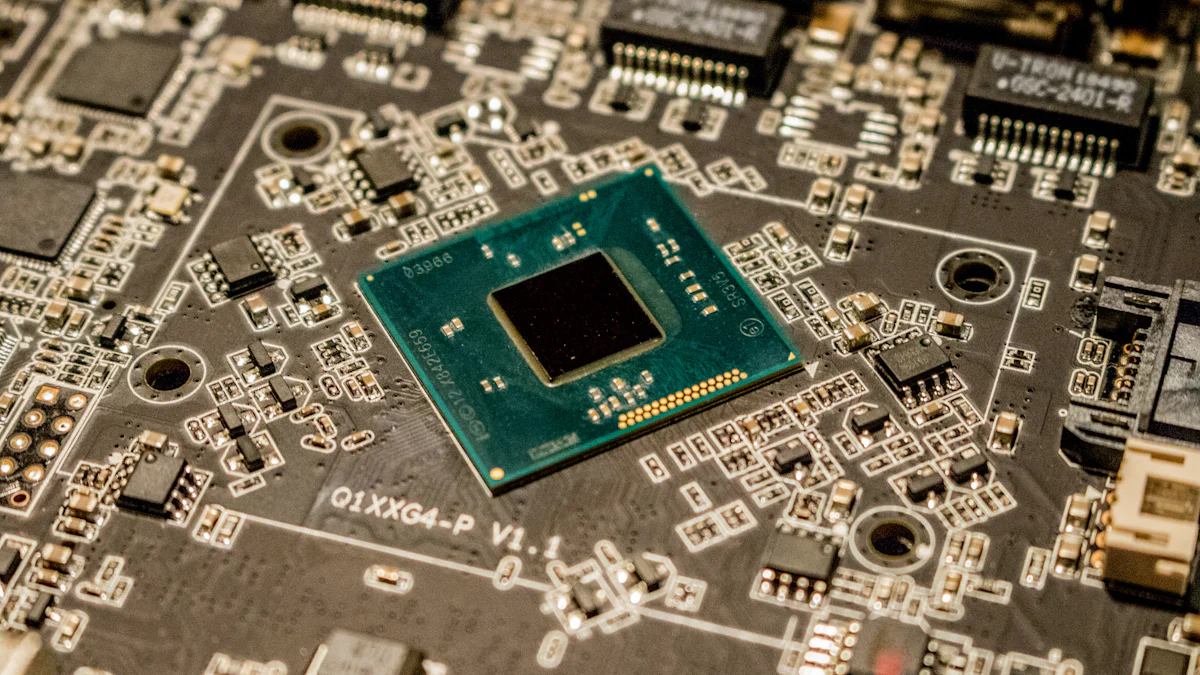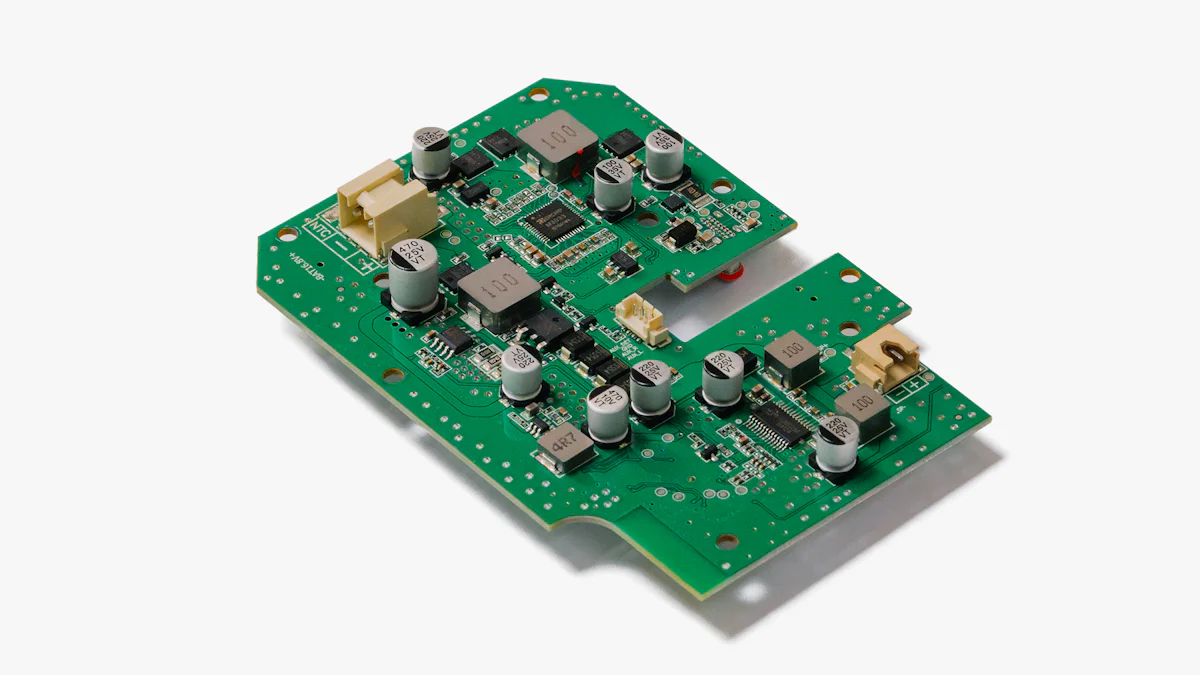Using the PIC16F883-I/SO for Advanced Embedded Microcontroller Design

The PIC16F883-I/SO microcontroller, developed by MICROCHIP, is a robust solution tailored for advanced embedded system applications. This 8-bit CMOS Flash-based microcontroller is equipped with 256 bytes of EEPROM, 11 channels of 10-bit ADC, and supports versatile communication protocols such as I²C and SPI. Its capability to perform embedded microcontroller development system-on-chip makes it an excellent choice for designing efficient and compact solutions. Whether you're working on smart home devices, automotive systems, or other embedded applications, this microcontroller delivers the flexibility and performance required. For detailed specifications, refer to its datasheet at https://www.alldatasheet.com/datasheet-pdf/pdf/197.
Key Takeaways
The PIC16F883-I/SO microcontroller is ideal for advanced embedded applications, offering features like 256 bytes of EEPROM and 11 channels of 10-bit ADC.
With a clock speed of up to 20 MHz, this microcontroller ensures efficient processing for real-time data handling and control tasks.
Its versatile I/O capabilities allow seamless integration with various sensors and actuators, making it suitable for home automation and automotive systems.
The built-in PWM and ADC modules enhance functionality, enabling precise control in applications like motor management and data acquisition.
The integration with MICROCHIP's MPLAB tools simplifies the development process, allowing for efficient coding, debugging, and optimization.
Low-power operation modes extend battery life, making the PIC16F883-I/SO a great choice for portable and battery-powered devices.
Despite its advantages, be mindful of its limitations in processing power and memory for high-performance applications.
Key Features of the PIC16F883-I/SO

Technical Specifications
Processor architecture and clock speed
The PIC16F883-I/SO features a high-performance RISC CPU architecture. This design ensures efficient instruction execution, allowing you to achieve faster processing speeds with minimal power consumption. The microcontroller operates at a clock speed of up to 20 MHz, which provides sufficient performance for a wide range of embedded applications. This speed enables you to handle tasks such as real-time data processing and control with ease.
Memory (RAM, Flash, and EEPROM)
Memory plays a critical role in microcontroller functionality. The PIC16F883-I/SO includes 368 bytes of RAM, which supports temporary data storage during program execution. It also offers 14 KB of Flash memory, providing ample space for program storage. Additionally, the microcontroller integrates 256 bytes of EEPROM, enabling you to store non-volatile data, such as configuration settings, that remain intact even after power loss. These memory features make it ideal for applications requiring reliable data retention and efficient program execution.
Input/output capabilities and pin configuration
The PIC16F883-I/SO provides 25 input/output (I/O) pins, offering flexibility for interfacing with external components. These pins allow you to connect sensors, actuators, and other peripherals seamlessly. The microcontroller's pin configuration supports multiple functions, enabling you to optimize your design for specific requirements. Whether you are building a home automation system or an automotive control unit, these I/O capabilities ensure smooth integration with your hardware.
Built-in Peripherals
PWM, ADC, and timers
The PIC16F883-I/SO includes built-in peripherals that enhance its functionality. It features Pulse Width Modulation (PWM) modules, which are essential for motor control and signal generation. The 11 channels of 10-bit Analog-to-Digital Converters (ADC) allow you to convert analog signals into digital data for processing. Additionally, the integrated timers enable precise time-based operations, making this microcontroller suitable for applications requiring accurate timing and control.
Communication protocols (USART, I2C, SPI)
Communication is vital in embedded systems. The PIC16F883-I/SO supports multiple communication protocols, including USART, I2C, and SPI. These protocols allow you to establish reliable connections between the microcontroller and other devices, such as sensors, displays, or wireless modules. This versatility simplifies the process of creating interconnected systems, such as Internet of Things (IoT) devices or industrial automation solutions.
Low-power operation modes
Power efficiency is crucial for battery-powered and portable devices. The PIC16F883-I/SO offers low-power operation modes, enabling you to reduce energy consumption during idle periods. These modes extend battery life and improve the overall efficiency of your design. Whether you are developing wearable technology or remote monitoring systems, this feature ensures optimal power management.
Development Ecosystem
Integration with MICROCHIP's MPLAB tools
The PIC16F883-I/SO integrates seamlessly with MICROCHIP's MPLAB development ecosystem. This ecosystem includes tools such as MPLAB X IDE and MPLAB Code Configurator, which simplify the development process. You can use these tools to write, debug, and optimize your code efficiently. The integration ensures a smooth workflow, allowing you to focus on creating innovative solutions.
Support for assembly and C programming
Programming flexibility is another advantage of the PIC16F883-I/SO. It supports both assembly and C programming languages, giving you the freedom to choose the language that best suits your project. The microcontroller is compatible with MICROCHIP's XC8 compiler, which is optimized for 8-bit devices. This support ensures that you can write efficient and reliable code for your embedded applications.
Practical Applications of the PIC16F883-I/SO
The PIC16F883-I/SO, developed by MICROCHIP, offers a wide range of practical applications. Its versatile features and ability to perform embedded microcontroller development system-on-chip make it an ideal choice for various industries. Below are some key areas where this microcontroller excels.
Embedded Systems
Home appliance control
You can use the PIC16F883-I/SO to design efficient control systems for home appliances. Its built-in PWM modules and ADC channels allow precise control of motors and sensors. For example, you can implement temperature regulation in air conditioners or speed control in washing machines. The microcontroller's I/O capabilities also enable seamless integration with buttons, displays, and other user interfaces, ensuring a smooth user experience.
Automotive electronics
In automotive applications, the PIC16F883-I/SO proves to be a reliable choice. Its robust architecture and communication protocols, such as I2C and SPI, allow you to connect with sensors and actuators in vehicles. You can use it to develop systems like engine control units, lighting systems, or even advanced driver-assistance systems (ADAS). The low-power operation modes ensure energy efficiency, which is crucial for automotive designs.
Internet of Things (IoT)
Wireless communication modules
The PIC16F883-I/SO supports communication protocols like USART, making it suitable for IoT applications. You can pair it with wireless modules such as Wi-Fi or Bluetooth to create connected devices. For instance, you can design smart thermostats or remote monitoring systems that transmit data to cloud platforms. Its ability to handle real-time data processing ensures reliable performance in IoT ecosystems.
Data acquisition and processing
Data acquisition is a critical aspect of IoT devices. The PIC16F883-I/SO excels in this area with its 11 channels of 10-bit ADC. You can use it to collect data from sensors, such as temperature, humidity, or pressure sensors. Once the data is acquired, the microcontroller processes it efficiently, enabling you to implement features like predictive maintenance or environmental monitoring.
Consumer Electronics
Portable and battery-powered devices
The PIC16F883-I/SO is well-suited for portable devices due to its low-power operation modes. You can design battery-powered gadgets like handheld medical devices or portable gaming consoles. Its compact size and efficient memory management make it an excellent choice for applications where space and power are limited.
Smart home automation
Smart home automation systems benefit greatly from the PIC16F883-I/SO. You can use it to control lighting, security cameras, or smart locks. Its ability to interface with various sensors and actuators ensures seamless operation. Additionally, the microcontroller's support for communication protocols allows you to integrate it into larger home automation networks, providing a unified and intelligent solution.
Development Tools for the PIC16F883-I/SO
The PIC16F883-I/SO microcontroller, developed by MICROCHIP, offers a robust development ecosystem to help you perform embedded microcontroller development system-on-chip. This ecosystem includes both software and hardware tools that simplify the design, programming, and debugging processes. Below, you will find an overview of the essential tools available for working with this microcontroller.
Software Tools
MPLAB X IDE and XC8 Compiler
The MPLAB X Integrated Development Environment (IDE), provided by MICROCHIP, serves as a comprehensive platform for developing applications with the PIC16F883-I/SO. This free IDE supports project creation, code editing, debugging, and simulation. Its user-friendly interface allows you to manage your projects efficiently, whether you are a beginner or an experienced developer.
The XC8 Compiler, also included in the MPLAB ecosystem, is optimized for 8-bit microcontrollers like the PIC16F883-I/SO. It enables you to write code in C, a high-level programming language that simplifies complex tasks. The compiler ensures efficient code generation, helping you maximize the performance of your microcontroller. Together, the MPLAB X IDE and XC8 Compiler provide a seamless environment for writing, testing, and refining your applications.
Third-party programming environments
If you prefer alternative tools, third-party programming environments also support the PIC16F883-I/SO. These environments often include additional features or specialized libraries that cater to specific application needs. For example, some developers use open-source platforms or commercial software to integrate the microcontroller into larger systems. Exploring these options can expand your development capabilities and offer new perspectives on solving design challenges.
Hardware Tools
PICkit programmers and debuggers
The PICkit series, including the popular PICkit 4, provides reliable hardware tools for programming and debugging the PIC16F883-I/SO. These devices connect directly to your microcontroller and allow you to upload code, test functionality, and troubleshoot issues. The PICkit tools are compact, easy to use, and compatible with the MPLAB X IDE, making them an essential part of your development toolkit.
Using a PICkit programmer, you can quickly load your programs onto the microcontroller and verify their operation. The debugging features help you identify and resolve errors in your code, ensuring that your application runs smoothly. These tools save time and effort during the development process, especially when working on complex projects.
Development boards and evaluation kits
Development boards and evaluation kits provide a convenient way to prototype and test your designs with the PIC16F883-I/SO. These boards include pre-configured hardware components, such as power supplies, I/O connectors, and communication interfaces, allowing you to focus on software development and system integration.
For example, you can use a development board to experiment with different configurations, test peripheral functionality, or evaluate the microcontroller's performance in real-world scenarios. These kits are ideal for learning, prototyping, and accelerating the development of your embedded applications.
"The right combination of software and hardware tools can significantly enhance your productivity and creativity when working with the PIC16F883-I/SO."
By leveraging these tools, you can unlock the full potential of the PIC16F883-I/SO and bring your embedded system designs to life.
Step-by-Step Guide to Setting Up and Programming the PIC16F883-I/SO

Setting Up the Development Environment
Installing MPLAB X IDE and XC8 Compiler
To begin working with the PIC16F883-I/SO, you need to install the MPLAB X Integrated Development Environment (IDE) and the XC8 Compiler. Visit MICROCHIP's official website and download the latest versions of these tools. Follow the installation instructions provided on the site. The process is straightforward and ensures you have the necessary software to perform embedded microcontroller development system-on-chip. Once installed, open MPLAB X IDE to confirm that it is functioning correctly.
Configuring the hardware setup
After setting up the software, prepare the hardware. Connect the PIC16F883-I/SO microcontroller to your development board or evaluation kit. Use a PICkit programmer to establish a connection between your computer and the microcontroller. Ensure all connections are secure and power the board using an appropriate power source. Verify that the microcontroller is recognized by the MPLAB X IDE before proceeding.
Writing and Uploading Code
Creating a new project in MPLAB X IDE
Open MPLAB X IDE and create a new project. Select the PIC16F883-I/SO as your target device. Choose the XC8 Compiler for your project. Name your project and specify a location to save it. The IDE will generate a basic project structure, allowing you to start coding immediately.
Writing and compiling the code
Write your program using the C programming language. Use the XC8 Compiler to ensure compatibility with the PIC16F883-I/SO. Include necessary libraries and configure the microcontroller's peripherals, such as ADC or PWM, based on your application. Once the code is complete, compile it within the IDE. The compiler will check for errors and generate a hex file if the code is error-free.
Uploading the program to the microcontroller
Use the PICkit programmer to upload the compiled program to the PIC16F883-I/SO. In MPLAB X IDE, select the "Make and Program Device" option. The IDE will transfer the hex file to the microcontroller. Wait for the process to complete and verify that the program has been successfully uploaded.
Debugging and Testing
Using MPLAB X IDE debugging tools
Debugging is essential to ensure your program functions as intended. MPLAB X IDE offers built-in debugging tools to help you identify and fix issues. Use breakpoints to pause the program at specific points and examine variable values. Step through the code line by line to understand its behavior. These tools simplify the debugging process and improve the reliability of your application.
Testing the microcontroller in a real-world application
After debugging, test the microcontroller in a real-world scenario. Connect it to the intended hardware setup, such as sensors or actuators. Observe its performance and ensure it meets your design requirements. Make adjustments to the code or hardware configuration if necessary. Testing in a practical environment validates your design and ensures its readiness for deployment.
"By following these steps, you can efficiently set up, program, and test the PIC16F883-I/SO for your embedded system projects."
Advantages and Limitations of the PIC16F883-I/SO
Advantages
Cost-effectiveness and availability
The PIC16F883-I/SO offers an affordable solution for developers seeking reliable microcontroller options. Its cost-effectiveness makes it accessible for both small-scale projects and large-scale production. You can easily source this microcontroller from various suppliers due to its widespread availability. This ensures that you can maintain consistent supply chains for your designs without delays or interruptions.
Versatility and wide range of applications
This microcontroller stands out for its versatility. It supports a variety of functionalities, including PWM, ADC, EEPROM, and serial communication ports. These features allow you to use it in diverse applications, such as home automation, automotive systems, and IoT devices. Whether you need to control motors, process sensor data, or establish communication between devices, the PIC16F883-I/SO adapts to your requirements seamlessly.
Robust development ecosystem
The PIC16F883-I/SO integrates with MICROCHIP's MPLAB development tools, providing a robust ecosystem for embedded system design. You can perform embedded microcontroller development system-on-chip efficiently using tools like MPLAB X IDE and the XC8 Compiler. These tools simplify programming, debugging, and optimization, enabling you to focus on innovation. The support for both assembly and C programming further enhances its usability, catering to developers with varying levels of expertise.
Limitations
Limited processing power for high-performance applications
The PIC16F883-I/SO operates with an 8-bit architecture and a maximum clock speed of 20 MHz. While this is sufficient for many embedded applications, it may not meet the demands of high-performance tasks requiring advanced processing capabilities. Applications involving complex algorithms or intensive data processing might require more powerful microcontrollers.
Constraints in memory and peripheral expansion
This microcontroller includes 368 bytes of RAM, 14 KB of Flash memory, and 256 bytes of EEPROM. These specifications are adequate for most small to medium-scale projects. However, if your application involves extensive data storage or requires additional peripherals, you might encounter limitations. Evaluating your project's memory and peripheral needs is essential before selecting this microcontroller.
Learning curve for beginners
For those new to embedded systems, the PIC16F883-I/SO may present a learning curve. Understanding its architecture, configuring peripherals, and mastering the MPLAB tools can take time. However, MICROCHIP provides extensive documentation and resources to help you overcome these challenges. With dedication and practice, you can quickly become proficient in using this microcontroller.
"The PIC16F883-I/SO strikes a balance between affordability, versatility, and ease of use, making it a valuable choice for a wide range of embedded applications."
The PIC16F883-I/SO, developed by MICROCHIP, offers a powerful combination of features, applications, and tools. Its technical capabilities, such as PWM, ADC, and versatile communication protocols, make it ideal for embedded systems, IoT devices, and consumer electronics. You can perform embedded microcontroller development system-on-chip efficiently using its robust development ecosystem, including MPLAB X IDE and XC8 Compiler. This microcontroller provides a reliable and adaptable solution for advanced embedded designs. Explore its potential to create innovative and efficient projects tailored to your needs.
See Also
Leveraging PIC16F1824-i/SL Microchip for Data Automation
Exploring STM8S003F3P6TR Microcontroller Uses in Embedded Systems
Utilizing XC2C128-7VQG100I Programmable Logic in Embedded Systems
Essential Features of the STM32F103C8T6 Microcontroller Explained

